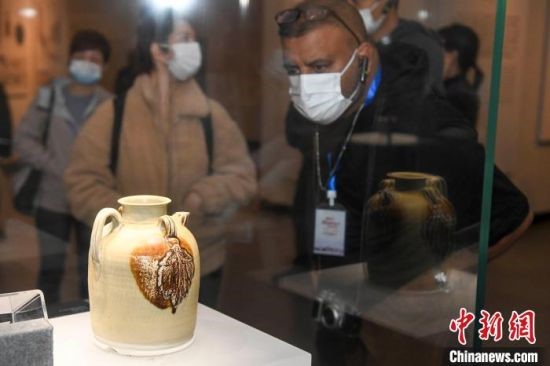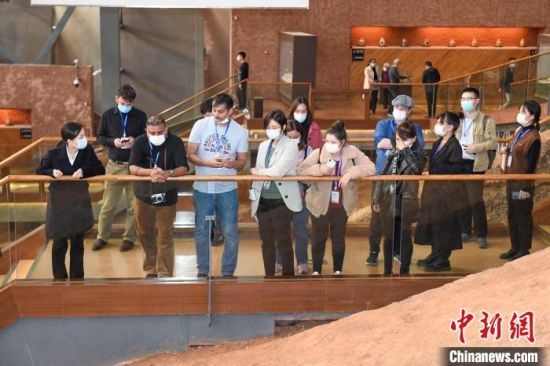
Foreigners visit the Changsha Tongguan Kiln Museum. (Photo/Yang Huafeng)
On October 23rd, a foreigners' tour around Hunan was launched at Tongguan Kiln in Changsha. Several foreigners living or working in Hunan participated and took the chance to experience the unique charms of Huxiang culture.

Foreigners visit the ruins of Tanjiapo Dragon Kiln, a special kind of kiln that was shaped as a Chinese dragon. (Photo/Yang Huafeng)
The Tongguan Kiln was originated in the early Tang Dynasty (618-683) and got prosperous in the middle and late Tang Dynasty (756-907). It has a long history of more than 1,000 years. Together with the Yue Kiln in Zhejiang and Xing Kiln in Hebei, it was one of the three significant kilns of exported pottery in the Tang Dynasty. In 1998, a shipwreck was discovered off the coast of Belitung Island of Indonesia. About 67,000 porcelain, gold, and silver items in the Tang Dynasty were salvaged, including more than 56,500 porcelain wares made in Tongguan Kiln. Now, 162 pieces (sets) of these relics are displayed at the Changsha Tongguan Kiln Museum.

Foreigners try their hands at making porcelains. (Photo/Yang Huafeng)
Colin Bissessar from Canada has been in Hunan for nearly 18 years. This was his first visit to Tongguan Kiln. He observed various porcelain exhibits and photographed them. "I wouldn't believe it, if I hadn't seen it with my own eyes. China's porcelain making technology was so matured and advanced thousand years ago, even integrated with the exotic cultural elements,” he said. He is going to recommend these millenary cultural relics to his friends.
Tanjiapo Dragon Kiln Site is a complete kiln area, with ruins of kilns, a restored kiln god temple, porcelain workshops, clay holes, and stacking. In addition, the whole process of porcelain production is displayed.
Shawn Ratto, a 32-year-old American girl said, "This is my first close-up time with unearthed porcelain. It is amazing." She is interested in Chinese history and hence came to China. She walked up the stairs along a visitor pathway in the Tanjiapo Dragon Kiln Museum and carefully appreciated the exhibits.
"I can learn about the porcelain-making process and technology in the Tang Dynasty, observe the handmade traces on the porcelain remains, and feel the kiln workers' ability in multi-cultural integration and innovation of colorful porcelain." She added, "I did not know that Changsha was a porcelain producer and exporter. I can't wait to message my friends and invite them to visit here."
"How were these ruins discovered?" "How were the porcelains made in the dragon kiln?" Tim Armstrong was curious about and enchanted by everything in the museum. He comes from New Zealand. This year is his 10th year in China and his second year in Changsha.
"So spectacular the dragon kiln was, and so smart the ancient people were! Today's museum and ancient town are well constructed." Tim Armstrong said that Hunan is worth visiting due to its porcelain culture and a variety of places featuring traditional Chinese culture and with Huxiang regional characteristics.
The tour was hosted by the Information Office of the Hunan Provincial People's Government and China News Service Hunan Branch.
This article is from Hunan Provincial Government www.enghunan.gov.cn.
Translator: Pang Yuehui
Chinese source: chinanews Hunan channel








